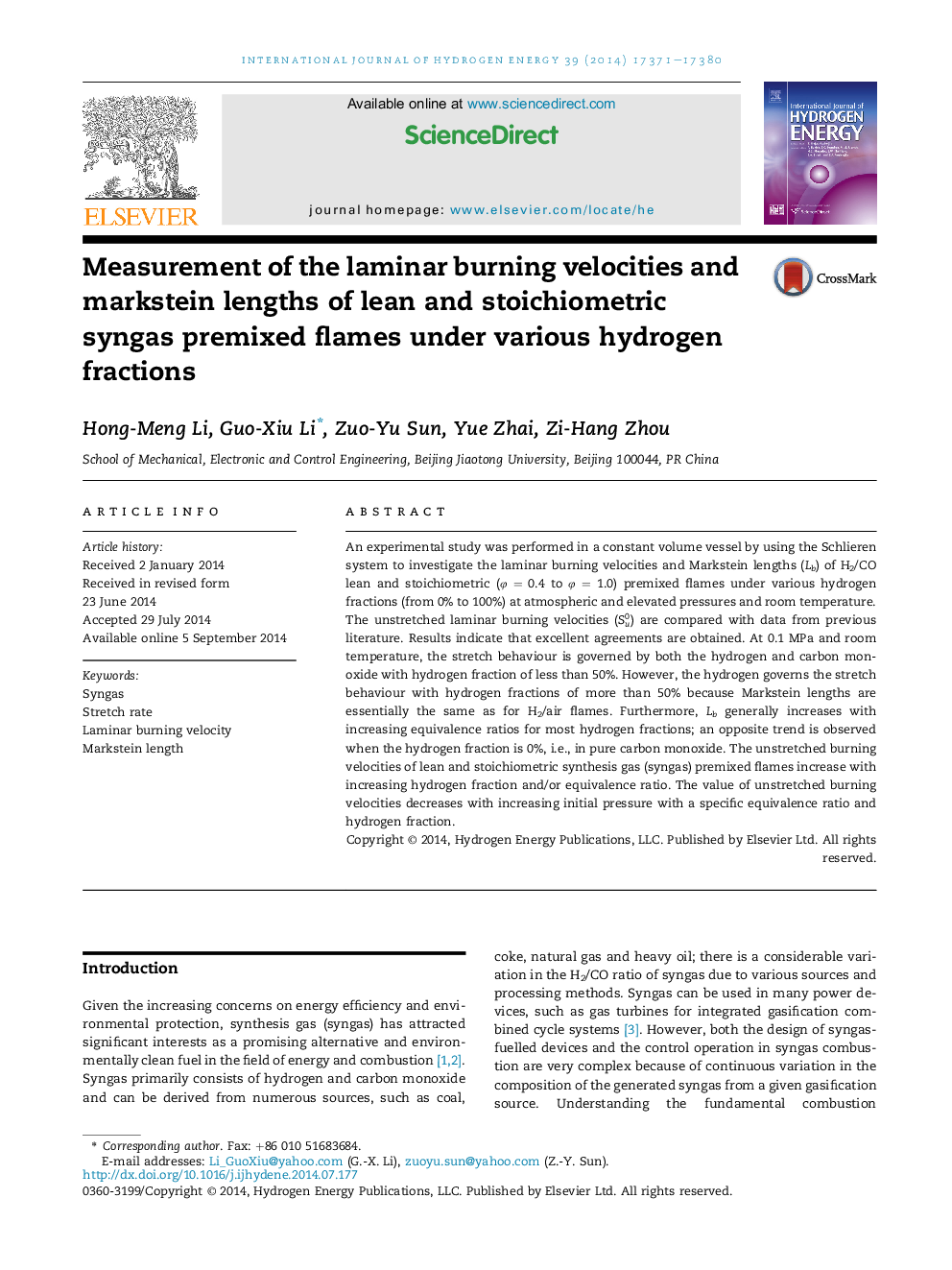| Article ID | Journal | Published Year | Pages | File Type |
|---|---|---|---|---|
| 1272193 | International Journal of Hydrogen Energy | 2014 | 10 Pages |
•Laminar burning velocities of H2/CO with variable hydrogen contents were measured.•Comparison of results from this research and published literature was done.•The flame stretch behaviour and Markstein length were studied.
An experimental study was performed in a constant volume vessel by using the Schlieren system to investigate the laminar burning velocities and Markstein lengths (Lb) of H2/CO lean and stoichiometric (φ = 0.4 to φ = 1.0) premixed flames under various hydrogen fractions (from 0% to 100%) at atmospheric and elevated pressures and room temperature. The unstretched laminar burning velocities (Su0) are compared with data from previous literature. Results indicate that excellent agreements are obtained. At 0.1 MPa and room temperature, the stretch behaviour is governed by both the hydrogen and carbon monoxide with hydrogen fraction of less than 50%. However, the hydrogen governs the stretch behaviour with hydrogen fractions of more than 50% because Markstein lengths are essentially the same as for H2/air flames. Furthermore, Lb generally increases with increasing equivalence ratios for most hydrogen fractions; an opposite trend is observed when the hydrogen fraction is 0%, i.e., in pure carbon monoxide. The unstretched burning velocities of lean and stoichiometric synthesis gas (syngas) premixed flames increase with increasing hydrogen fraction and/or equivalence ratio. The value of unstretched burning velocities decreases with increasing initial pressure with a specific equivalence ratio and hydrogen fraction.
